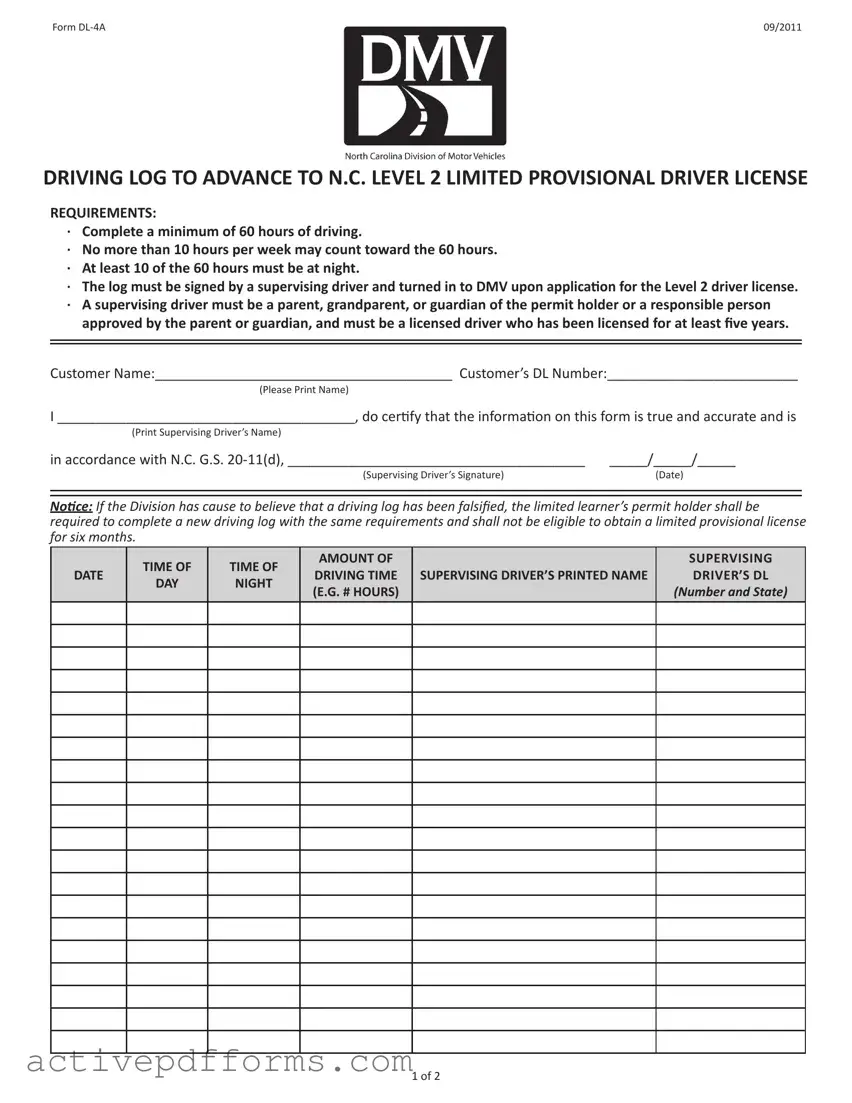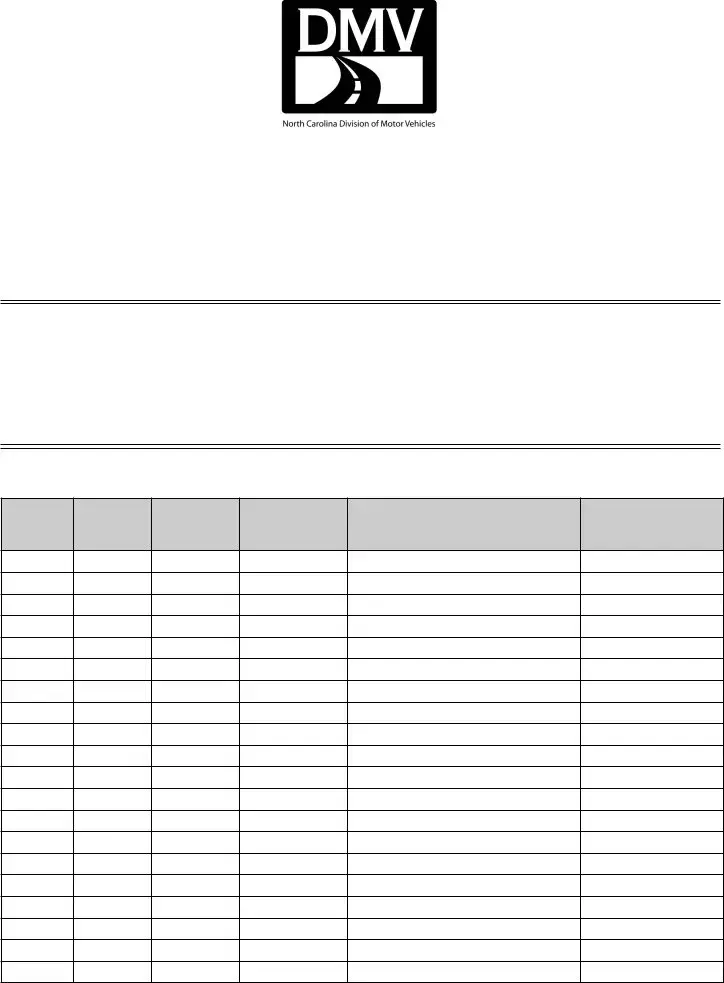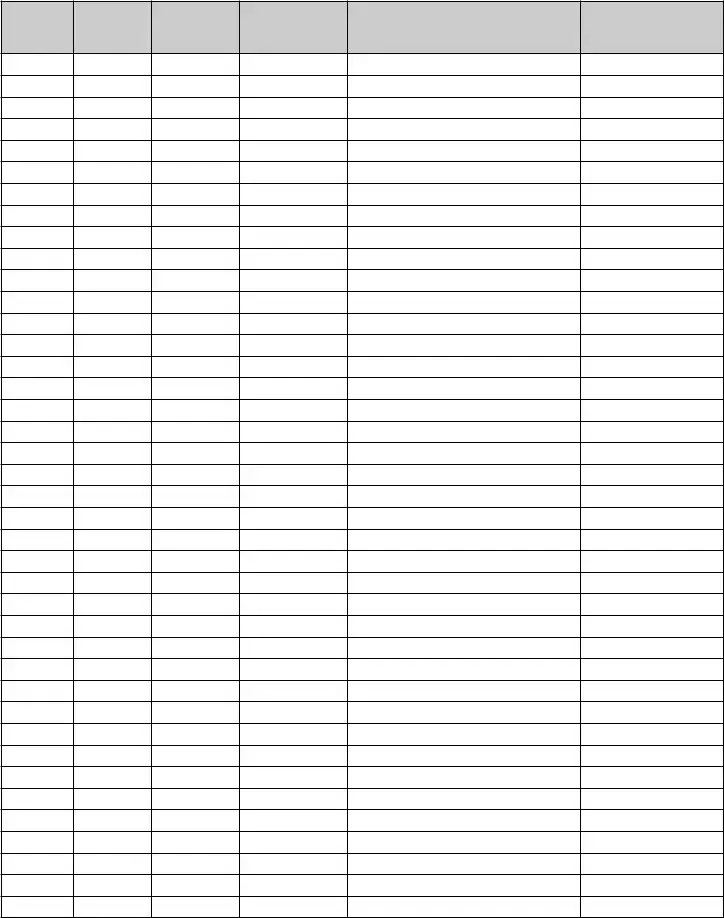Taking the step from a learner's permit to a Level 2 Limited Provisional Driver License in North Carolina is a significant milestone for young drivers, and the Nc DL 4A form plays a crucial part in this journey. This form, updated in September 2011, serves as a detailed driving log, meticulously recording a minimum of 60 hours behind the wheel, a requirement for advancing to the next level of driving independence. With restrictions on the number of hours that can be accounted for each week, specifically no more than 10 hours, it ensures a spread-out learning experience, including a mandatory minimum of 10 nighttime driving hours. The driving log's authenticity and compliance with the North Carolina General Statutes (N.C. G.S. 20-11(d)) rely on the endorsement of a supervising driver—a parent, grandparent, guardian, or an individual approved by them, who has been licensed for at least five years. This form not only embodies a pivotal phase in a young driver's life but also underscores the importance of responsible supervision. Furthermore, it carries a stern warning against falsification, indicating serious consequences that include a delay in the attainment of the provisional license. The DL-4A form, thus, is much more than a mere document; it's a testament to accountability, learning, and the path to driving competence.


